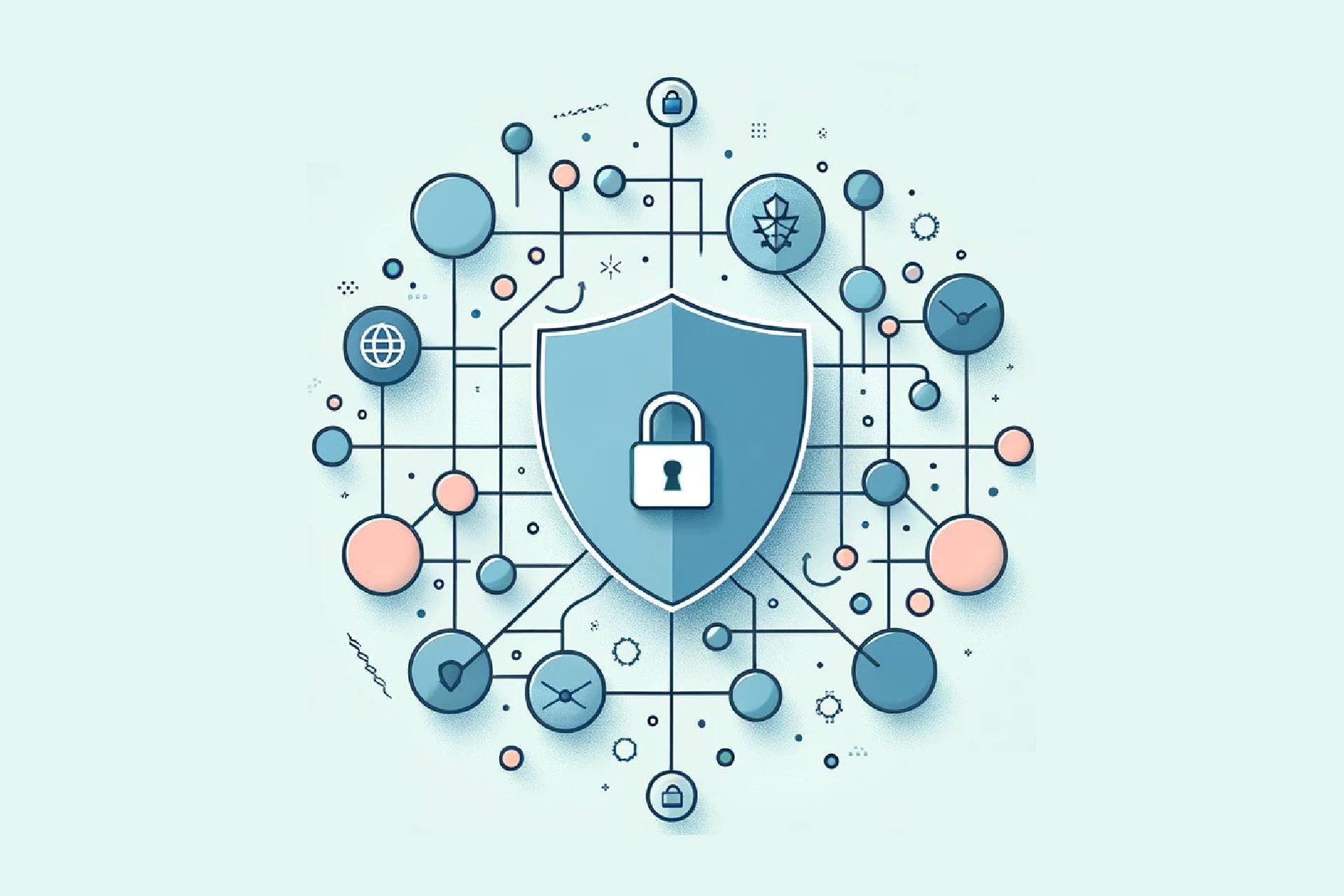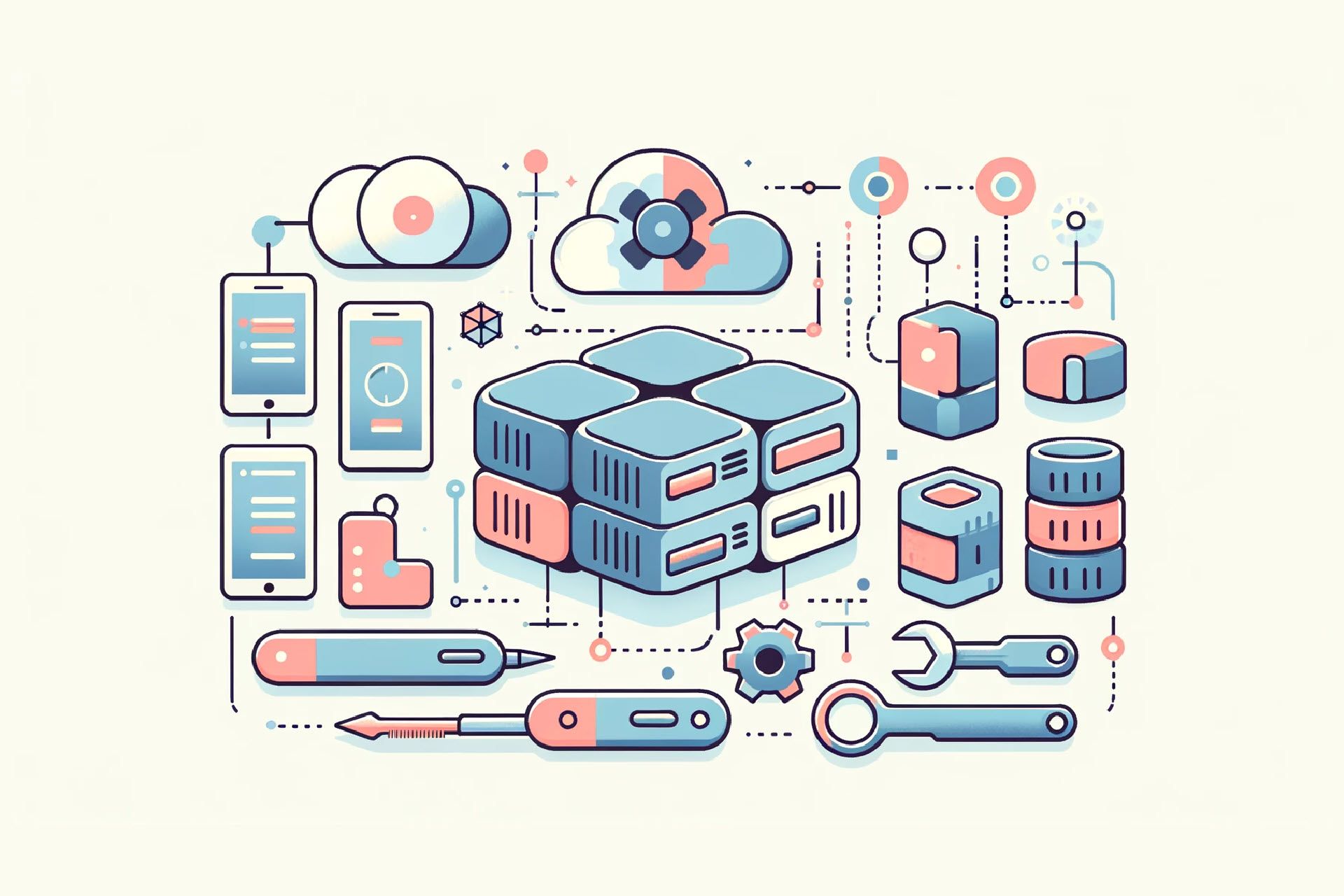The digital landscape is filled with evolving cyber threats that aim to disrupt organizations’ business continuity. This environment means that maintaining network security is an essential component of any successful security strategy.
This article explains everything you need to know about the different types of network security and how businesses can incorporate them to protect their operations.

What Is Network Security?
Network security is a set of policies designed to safeguard the integrity, confidentiality, and accessibility of computer networks and the data they contain and transfer. It relies on firewalls that act as barriers between trusted and untrusted networks, as well as intrusion detection systems (IDS) and intrusion prevention systems (IPS), which monitor traffic for suspicious activities and block them. In addition, virtual private networks (VPNs) and antivirus software provide an additional layer of security from harmful attempts to breach a network.
Read about the most common types of network security threats organizations face.
What Are the Three Elements of Network Security?
Network security includes three essential components:
- Hardware network security. This includes physical devices that protect and monitor computer networks, such as firewalls, routers, and network security appliances (NSAs).
- Software network security. This includes applications and programs that protect the network infrastructure, such as antivirus programs, encryption software, and tools for intrusion detection and prevention.
- Cloud network security. This includes measures and technologies that protect cloud computing environments, such as secure access controls, threat detection, and mitigation strategies.
15 Types of Network Security
There are 15 types of network security, including:
- Firewalls.
- Antivirus and anti-malware software.
- Intrusion prevention systems (IPS).
- Virtual private networks (VPN).
- Web security.
- Data loss prevention (DLP).
- Email security.
- Network access control (NAC).
- Network segmentation.
- Security Information and Event Management (SIEM).
- Encryption.
- Endpoint security.
- Wireless security.
- Cloud security.
- Application security.
1. Firewalls
Firewalls function as a barrier between secured internal and untrusted external networks. They control incoming and outgoing network traffic to allow only legitimate traffic to pass through. This is done through packet filtering, where the firewall examines small chunks of data (packets) against a predetermined set of filters. There are 3 types of firewalls:
- Hardware-based. They offer a robust layer of protection at the network perimeter.
- Software-based. These firewalls provide more granular, host-level security control.
- A combination of both.
Firewalls have a critical role in maintaining dynamic security across the entire network infrastructure. They work well when combined with VPNs, which support remote access, and IPS, which identify and block threats.
2. Antivirus and Anti-Malware Software
Antivirus and anti-malware software protect computers and networks against malicious software, such as viruses, worms, trojans, ransomware, and spyware. These tools scan computer systems and files to detect malicious software, both known and unknown, by analyzing behavior and characteristics. Modern antiviruses are designed to scan systems in the background and detect and neutralize threats as they occur, providing real-time alerts without significantly impacting performance.
Today’s antivirus and anti-malware software offer additional services, such as:
- Email scanning. Involves scanning emails for suspicious links and attachments.
- Web protection. Prevents users from accessing harmful websites.
- Vulnerability scans. Identify and detect weak spots in networks and systems.
- Ransomware protection. Safeguard users from common ransomware attacks.
Protect your company from ransomware with our Ransomware Protection Services.
3. Intrusion Prevention Systems (IPS)
Intrusion prevention systems (IPS) identify and prevent cyber attacks in real time. They examine incoming traffic flows to detect vulnerabilities before cybercriminals can exploit them. IPS detects a wide range of malicious activities, such as denial-of-service (DoS) attacks, brute force attacks, worms, and viruses.
IPS solutions rely on several advanced solutions, including signature-based detection. This tool matches observed network traffic against a database of known threat signatures. Anomaly-based detection leverages machine learning to understand normal network behavior and flag deviations. Once it detects a threat, the IPS takes immediate action, which can include blocking all traffic, resetting connections, and alerting network administrators.
4. Virtual Private Networks (VPNs)
VPNs are vital for network security as they provide a secure and encrypted connection over a potentially unsecured network. They create a private network from a public internet connection to mask the user’s IP address and provide online privacy. VPNs are widely used by individuals and companies wishing to protect their online activity from eavesdropping or interception.
VPNs provide essential security to companies with a remote workforce by protecting sensitive data from external threats. They apply encryption protocols and secure tunneling techniques to encapsulate and encrypt data during transfer, making it inaccessible to unauthorized users. Furthermore, VPNs go beyond geo-restrictions and network filters, allowing users to access content that is blocked in their regions.
5. Data Loss Prevention (DLP)
Data loss prevention solutions are essential for preventing sensitive information from being lost, misused, or accessed by unauthorized users. These technologies identify, monitor, and protect data in use, at rest, and in transit to help organizations secure financial data, personal information, or intellectual property.
DLP systems monitor and control endpoint activities, filter data streams, and secure data in the cloud by automatically triggering alerts, encryption, and blocking data transmission if a breach is detected. These tools are particularly effective in blocking accidental data exposure due to human error. They also provide valuable insights into data usage and user activity, helping personnel prepare for and mitigate future risks.
6. Email Security
Email security refers to measures for securing email communications, the primary vector of cyber attacks. Email security tools are designed to prevent phishing, malware, and data theft by filtering incoming and outgoing emails. They detect threats, prevent unauthorized access, and preserve data confidentiality by blocking spam, malicious attachments, and links to harmful websites.
Email security also involves protecting the email infrastructure via encryption, which is essential for ensuring the integrity and privacy of email communication. Modern email security tools utilize machine learning and artificial intelligence to recognize and respond to email-based threats more easily and quickly than ever before.
7. Web Security
Web security is a critical aspect of digital protection that includes safeguarding websites, web applications, and web services from cyber threats. It detects threats such as cross-site scripting (XSS), SQL injections, and denial of service (DoS) attacks that lead to unauthorized access, data theft, and service disruption. Web security greatly relies on the use of web application firewalls (WAFs), frequent vulnerability scans, and robust authentication and access control measures.
Web security specifically focuses on securing data transmissions over the internet through encryption protocols such as SSL/TLS. These protocols secure the connection between a user’s browser and the web server, ensuring data privacy and integrity. Web security also includes constant monitoring and logging of web traffic and user activity to detect suspicious behavior patterns that indicate potential breaches.
Help your business remain online 24/7 with phoenixNAP’s DDoS server protection.
8. Network Access Control (NAC)
Network access control (NAC) oversees access to network resources to ensure that only authorized devices can access networked systems. This technology identifies all devices attempting to access the network, filtering them out and preventing vulnerable or compromised devices from connecting. For this purpose, NAC checks each device for health and compliance status, security patches, and antivirus definitions.
NAC solutions are highly adaptable and can enforce various access controls, including more complex checks based on the user role, device type, and location. They allow network administrators to permit or deny access to specific network segments or resources. Furthermore, NAC systems can automatically restrict access privileges or quarantine a suspicious device in case of threat detection or policy violation.
9. Network Segmentation
Network segmentation involves the segmentation of networks based on department, function, or application. By dividing a network into smaller, more manageable subnetworks, administrators can enforce specific security policies tailored to the needs and risk profile of each segment. Furthermore, if a malicious actor gains access to one segment, the breach can be contained and prevented from compromising the entire network.
Implementing network segmentation involves not only the physical separation of network resources but also the configuration of devices, such as routers and switches, which control the flow of traffic between segments. Technologies such as firewalls and virtual local networks (VLANs) are commonly used for creating subnetworks.
10. Security Information and Event Management (SIEM)

SIEM systems aggregate and analyze data from various sources within a network, such as security devices, network infrastructure, systems, and applications. They collect security-related logs and events, which they then process, normalize, and analyze to detect signs of suspicious activity and block potential threats before they turn into serious security incidents.
SIEM systems can also recognize patterns that indicate complex cyber attacks, which other security methods usually overlook. They provide immediate alerts about potential security incidents and perform continuous monitoring and analysis. SIEM solutions often incorporate AI solutions to enhance detection capabilities and predict future threats based on observed patterns.
11. Encryption
Encryption is a critical method for protecting data privacy and integrity across various systems, including networks. It converts plain text into a coded form (ciphertext), which can only be decoded and read by someone with a correct decryption key. This ensures that even if malicious agents steal data, they cannot decipher and misuse it. Encryption is essential for protecting online transactions, email communication, and data stored on hard drives, in the cloud, or on mobile devices.
There are two primary types of encryption:
- Symmetric encryption, where the same key is used for both encryption and decryption.
- Asymmetric encryption, which uses a pair of public and private keys and secures internet communications via SSL/TLS protocols.
The Advanced Encryption Standard (AES) is a global symmetric encryption standard used to protect classified information that helps manage security encryption practices.
Learn more about the Rivest-Shamir-Adleman (RSA) Encryption Algorithm, an asymmetric cryptographic algorithm that is the foundation of modern cybersecurity.
12. Endpoint Security
Endpoint security focuses on protecting endpoints, such as desktops, laptops, and mobile devices, from cyber threats. These endpoints are often the target of cyber attacks since they connect directly to networks that contain sensitive data. Endpoint security extends beyond traditional antivirus software by offering enhanced protection against malware, phishing attacks, and advanced persistent threats (APTs).
Modern endpoint security systems integrate with other security tools to provide a more comprehensive approach to safeguarding information and networks. They enforce security policies, manage and control device access to networks, and even isolate compromised devices to minimize the attack surface and prevent the spread of threats. Endpoint security is especially important in the era of remote working, where the perimeter of the network is no longer confined to a physical location.
13. Wireless Security
Wireless security focuses on protecting wireless networks from unauthorized access and cyber attacks. These networks are transmitted over airwaves, which makes them much more vulnerable to eavesdropping and interception than traditional, wired networks. Key threats in wireless security are unauthorized access attempts, man-in-the-middle attacks, and the exploitation of weak encryption standards.
To mitigate these risks, wireless security protocols such as WPA2 (Wi-Fi Protected Access 2) and its more recent version, WPA3, are used to encrypt data transmitted over wireless networks. In addition to this, wireless security implements strong authentication measures to verify the identity of each user attempting to access the network.
14. Cloud Security
Cloud security is a set of policies and procedures that protect cloud-based systems, data, and infrastructure. With the increase of cloud computing, security concerns within the cloud environment have also grown. Threats to the cloud involve protecting cloud-based assets, data privacy and security, compliance, and preventing data breaches, DDoS attacks, and malware.
Cloud environments are highly dynamic and scalable, which introduces a unique set of challenges for security experts, including multi-tenancy and the decentralization of cloud services. Cloud security functions on a shared responsibility model, where both the cloud service provider and the client are actively involved in ensuring security protocols are honored. This includes applying encryption methods, identity and access management (IAM) systems, and continuously monitoring for suspicious activity.
Learn about the most common cloud security threats today.
15. Application Security
Application security encompasses measures for protecting software applications from cyber threats and data breaches. Since applications are often accessible over networks, they are highly vulnerable to a wide variety of attacks. Application security relies on the active prevention of security vulnerabilities in all stages of the software development life cycle, from design to deployment and maintenance.
The most important application security principles include:
- Enforcing secure coding practices and regular code reviews.
- Using automated security testing tools, which provide continuous monitoring.
- Installing web application firewalls (WAFs) to monitor and block malicious traffic.
- Leveraging Runtime Application Self-Protection (RASP) for the detection and mitigation of threats in real time.
- Performing regular updates and patches to prevent the exploitation of vulnerabilities.
phoenixNAP’s secure-by-design solutions offer you a state-of-the-art cloud platform that gives you peace of mind at an affordable price point. Our Data Security Cloud is a secure multi-tenant cloud infrastructure platform built on secure hardware, strict virtualization and segmentation controls, threat intelligence, and advanced physical security. In collaboration with Intel® and VMware®, we provide you with enterprise-grade infrastructure that ensures the fast and reliable protection of your sensitive data.
Secure Your Network - Secure Your Future
Network security is a pillar of success for companies in today’s digital era. Protecting your network requires a multilayered approach that includes combining advanced technologies, strategic planning, and continuous vigilance. From firewalls and antivirus software to encryption, network segmenting, and cloud security monitoring, network security embraces a range of strategies. Crucially, network security is not a one-time effort but an ongoing process that requires organizations to continually educate themselves and adapt to new threats.



